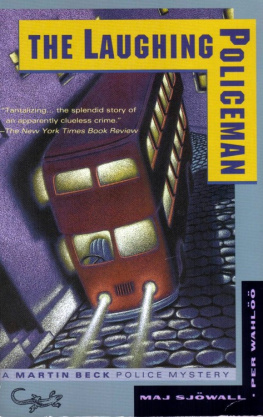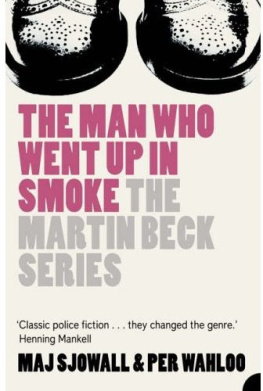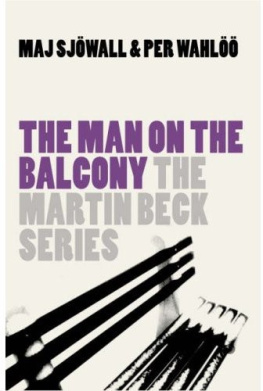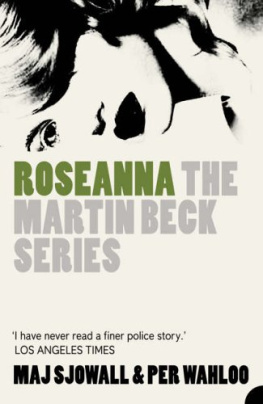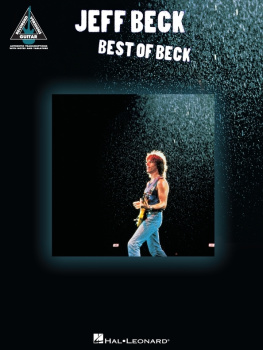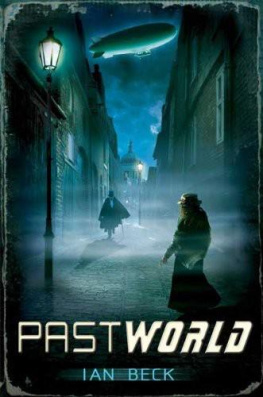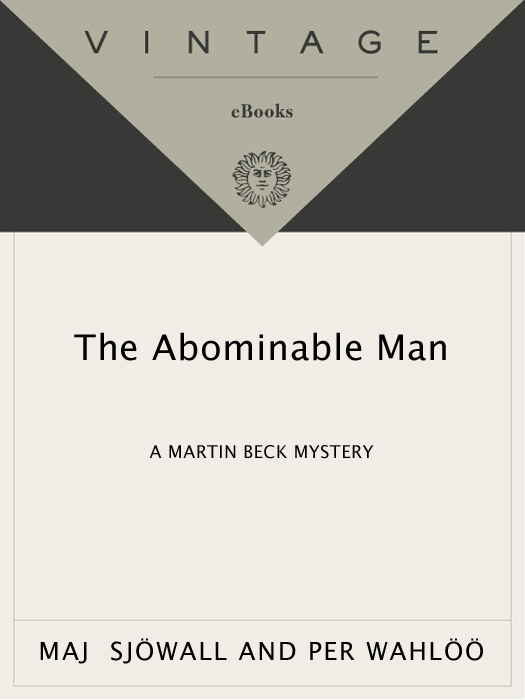SECOND VINTAGE CRIME/BLACK LIZARD EDITION, OCTOBER 2009
Translation copyright 1972 by Random House, Inc.
Introduction copyright 2009 by Jens Lapidus
All rights reserved. Published in the United States by Vintage Books, a division of Random House, Inc., New York, and in Canada by Random House of Canada Limited, Toronto. Originally published in Sweden as Den vedervrdige mannen fian Sffle by P.A. Norstedt & Sners Frlag, Stockholm, in 1971. Copyright 1971 by Maj Sjwall and Per Wahl. This translation originally published in a slightly different form in hardcover in the United States by Pantheon Books, a division of Random House, Inc., New York, in 1972, and subsequently published by Vintage Books, a division of Random House, Inc., New York, in 1980.
Vintage is a registered trademark and Vintage Crime/Black Lizard and colophon are trademarks of Random House, Inc.
This is a work of fiction. Names, characters, places, and incidents either are the product of the authors imagination or are used fictitiously. Any resemblance to actual persons, living or dead, events, or locales is entirely coincidental.
The Library of Congress Cataloging-in-Publication Data:
Sjwall, Maj, 1935
[Den vedervrdige mannen frn Sffle. English]
The abominable man / by Maj Sjwall and Per Wahl; translated from the Swedish by Thomas Teal.2nd Vintage Crime/Black Lizard ed. 1. Beck, Martin (Fictitious character)Fiction. 2. PoliceSweden StockholmFiction.
I. Wahl, Per 1926-1975, joint author. II. Title.
PZ4.S61953 Ab 1980 [PT9876.29.J63]
839.7374dc22
79022673
eISBN: 978-0-307-77284-8
www.vintagebooks.com
v3.1
Praise for
MAJ SJWALL and
PER WAHL
The series of detective stories by Maj Sjwall and Per Wahl, starring Martin Beck, has maintained such a degree of excellence that comparisons are near impossible.
Minneapolis Tribune
The first great series of police thrillers. Truly exciting.
Michael Ondaatje
Anyone who doesnt know their work and likes murder mysteries has a real treat coming, namely reading one of their books. Person ally we like Beck even better than Simenons Inspector Maigret.
Indianapolis Star
The Martin Beck books are exemplary police procedurals.
The Washington Post
So many of the elements that have become integral in the police procedural subgenre started life in these ten novels. Their plots are second to none.
Val McDermid
Maj Sjwall and Per Wahl
Maj Sjwall and Per Wahl, her husband and coauthor, wrote ten Martin Beck mysteries. Mr Wahl, who died in 1975, was a reporter for several Swedish newspapers and magazines and wrote numerous radio and television plays, film scripts, short stories, and novels. Maj Sjwall is also a poet.
Books by MAJ SJWALL and PER WAHL
Roseanna
The Man Who Went Up in Smoke
The Man on the Balcony
The Laughing Policeman
The Fire Engine That Disappeared
Murder at the Savoy
The Abominable Man
Cop Killer
The Terrorists
Contents
INTRODUCTION

Few writers have influenced an entire genre in the way that Maj Sjwall and Per Wahl have. It is not surprising then that so many colleagues read the Story of Crime series as soon as the books were published, or shortly thereafter. They raced through the books in a matter of days, in breathless admiration. And they are happy to tell that they discovered and were influenced by this new way of writing crime early on. A new voice. A new angle.
I wasnt even born when The Abominable Man was published, as the seventh book in the series. And I didnt read my first crime novel until I was twenty-five. I know that may sound a bit nerdy, but its the truth. I was more of a quasi-intellectual, who wandered around in a worn parka and generally read Russian or American classics. Crime novels were not good enough.
But I always knew about The Abominable Man. And despite my lack of interest in the genre, it affected me indirectly and helped to shape my understanding of how Stockholm and Sweden could be portrayed. Only not in book form.
Like so many others, I was introduced to the book by the film adaptation, Mannen p taket (The Man on the Roof), which was made in Sweden in 1976. I was only two in 1976. But about ten years later, toward the end of the 1980s, a series of Bo Widerbergs films were shown again on Swedish television. I argued with my parents for days. I fought for the right to see what I understood to be the greatest Swedish action film ever. No, they said. Its too disturbing, too violent. It might have a negative effect on you.
Yes, I said. Everyone else is going to watch it and theyll all be talking about it at school tomorrow. Its not fair.
And for some reason, they gave in (which, by the way, they didnt when it came to Hitchcocks Psycho or Don Siegels Dirty Harry, which were also shown on TV that year). Perhaps it was because they shared Sjwall & Wahls left-wing ideals. Or perhaps it was because the film was Swedish, which in my parents eyes meant that it would be, by definition, less corrupting than anything Anglo-Saxon.
However, the film was anything but Swedish. It was modern American action of the most graphic sort. For example, a Bell 206 Jet Ranger crashes into the entrance of the mens toilets on Odenplan in central Stockholm. This isnt actually where the police helicopter crashes in the book, but that doesnt matterit was happening in my town, at a place that I knew. In my world, for real. It was the first time I had seen anything that felt so authentic, and the image of that painted helicopter often still pops into my mind when I take the metro from Odenplan.
I was struck by the same feeling years later when I finally got over my literary snobbishness and read The Abominable Man. It was the feeling that someone had for the first time managed to describe criminality and police work in Stockholm adequately, in a way that was real, as it might actually have happened. In a way that I could still recognize, even though the book had been written more than thirty-five years ago.
It has been said many times that it is in fact Maj Sjwall and Per Wahls radical perspective that created the Swedish crime genre. They carried on the tradition of Swedish proletarian writers such as Ivar Lo-Johansson and Per Anders Fogelstrm, and developed a new social criticism that was a natural part of the narrative.
The Story of Crime series is also about Stockholm, the city. It is a joy to follow Martin Beck as he drives through the streets, streets that I myself have walked down a hundred times or more. Or to read about the shooting incident at the Eastman Institute, where I myself went several times as a child to have my braces adjusted. Or to read the descriptions of the buildings and open spaces on the island of Reimersholme, where I go jogging several times a month.
The portrayal of the city means so much to me, but not only because I come from Stockholm. The books describe a city and a country in the grip of change, just as they describe a time of change; a time when the importance of the manufacturing industry in Sweden was on the decline in favor of more service-related industries, when Sweden had really started to accept foreign immigration. A time when enormous changes in infrastructure generated a whole new set of challenges for the Swedish people, but also created new opportunities for crime. It was a time when sexual liberation went hand in hand with political awareness, when the old was truly replaced by the new.


